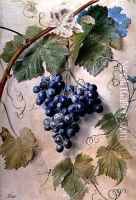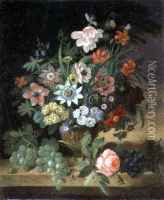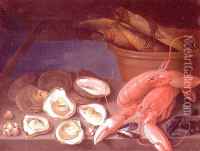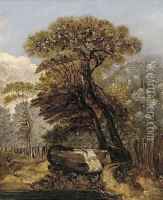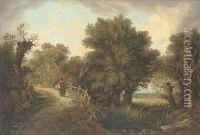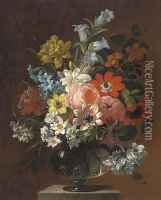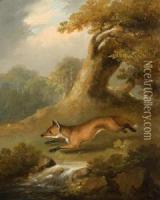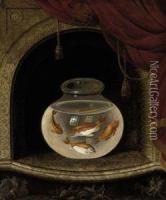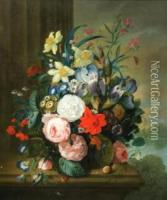James Sillett Paintings
James Sillett (1764-1840) was a British artist known primarily for his detailed and delicate paintings of flowers and fruits, as well as his landscape works. Born in the mid-18th century, Sillett's artistic journey began at a time when botanical illustration was becoming increasingly popular, partly due to the expanding interest in botany and natural sciences. He lived through the Georgian era, a period marked by significant developments in the arts and sciences in Britain.
Sillett's early life is not extensively documented, but it is known that he developed an interest in art at a young age. His talent for capturing the intricate details of plant life garnered attention, and he soon established himself as a skilled botanical artist. He worked in a variety of mediums, including watercolor, oil, and engraving, showcasing his versatility as an artist.
Throughout his career, James Sillett contributed to various botanical publications, illustrating the beauty and complexity of flora with precision and care. His artworks not only served as aesthetic objects but also as scientific illustrations that helped to further the understanding of plant species. Sillett was a member of the Norwich School of painters, a group of artists based in Norwich, England, who were known for their landscape paintings and strong sense of regional identity. This connection highlights Sillett's versatility, as he was able to excel in both the detailed work of botanical illustration and the broader strokes of landscape art.
Despite his contributions to art and science, James Sillett is not as well-known today as some of his contemporaries. However, his work remains an important part of the history of botanical art, offering insight into the artistic and scientific endeavors of his time. His paintings are characterized by their attention to detail, vibrant colors, and the ability to convey the beauty of nature, making them valuable to both art historians and botanists alike.
James Sillett's legacy is preserved in various collections and museums, where his works continue to be appreciated for their beauty and scientific accuracy. His life and art reflect the rich intersection of art, science, and the natural world during the Georgian era, making him a noteworthy figure in the history of British art.
